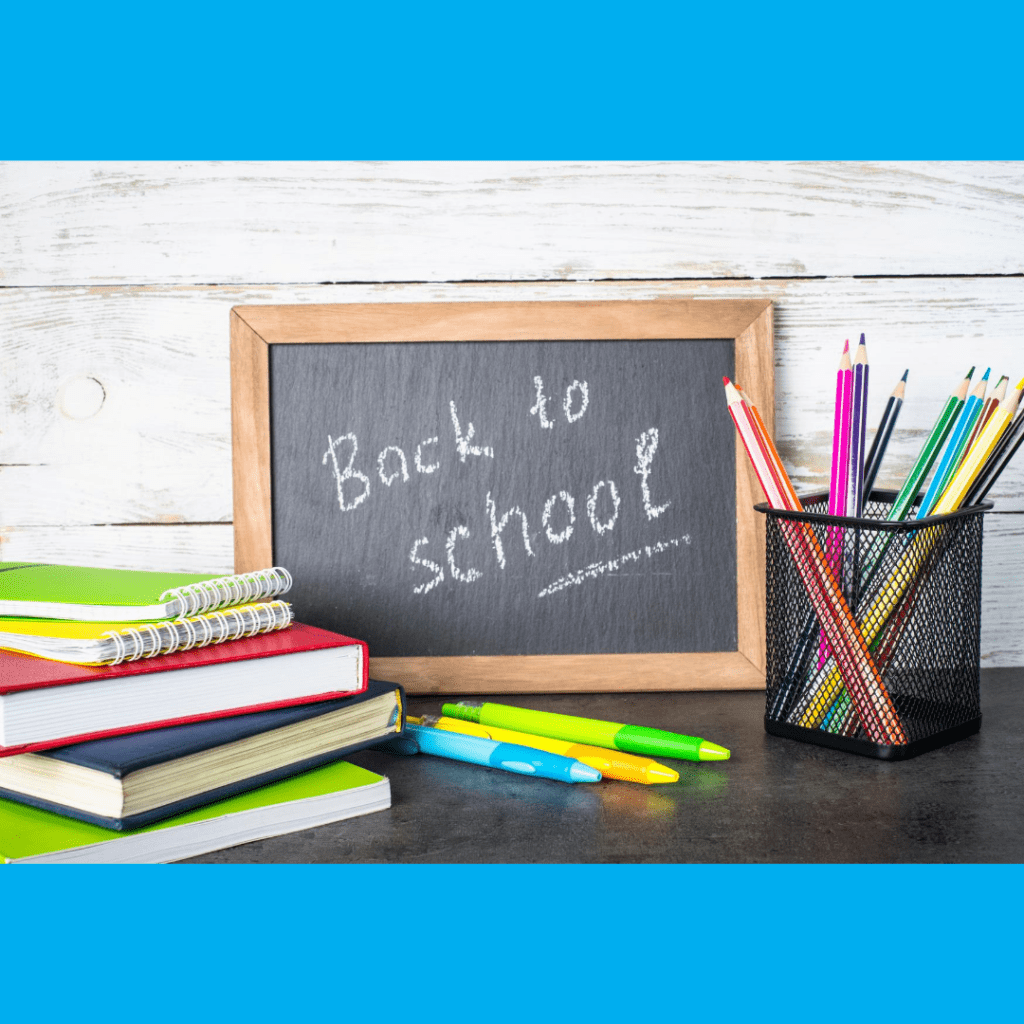In just a few days, kids will head back to school. We know that regardless of whether school will be in person, remote or hybrid, it will be different than in year’s past. We are here to support you during this time of transition. Here are some tips that can help.
Make Mask Wearing Fun!
This is important whether you are going back to school in person or not. Mask wearing is now part of our daily lives – whether we are going to the grocery store, buying school supplies, or even going to the park. Make wearing the mask fun by having your child decorate it to make it their own. If it’s a paper mask, they can use stickers. If it’s fabric, use fabric paint to decorate the outside. Find fabrics that reflect their personality, like their favorite sports team or superhero. You can even attach wings to them if you want to be an angel or something similar. These little tweaks will make the masks something children enjoy wearing.
Learn more from our blog post dedicated to helping children get used to the idea of wearing a mask in public.
Establish a School Day Educational Schedule
Parents should consider starting with a morning meeting to review the schedule for the day, just like teachers do! Have a list of the subjects and activities for the day, and create 30 to 45-minute blocks of time for each subject.
Create your child’s own “Home Office” for distance learning and reduce distractions
Choose a location with as few distractions as possible. Have your children participate by decorating the space. Organize supplies and include stress relievers. Favorite toys should not be in the area you designate for school work. Make sure to limit the use of devices until the schoolwork is done.
Provide positive feedback:
Many children miss receiving reinforcement and reassurance from teachers and counselors. Building a reward system can help maintain motivation. After kids complete a task or finish a class, consider praising them. Putting a check mark, star or sticker on a work assignment can go a long way to encourage a child. Other options that may work well with younger children are giving a sweet treat, allowing playtime with a favorite toy or an extra 15 minutes to play before bedtime
Encourage independence
Older children should be allowed to manage their own schoolwork and their own responsibilities without nagging. Check in to be sure everything is getting done and to offer assistance if they are struggling. For younger children, providing a structured set of choices allows kids to feel a sense of independence.
Reach out to your child’s teacher
A lack of communication with a parent can be challenging for a teacher, particularly in the online learning environment. Being proactive is essential to help your child mange this transition. It is especially important if your child struggles in school.
Know the difference between distance learning and homeschooling
With distance learning, educators remotely provide materials and oversee the student’s education. Lean on the teacher for guidance with how involved you need to be as a parent.
Take virtual field trips
Live webcams can take students all around the world. Check out this blog post about activities you can do at home.
Exercise
By keeping active each day, everyone will be calmer and will sleep better. Get involved by taking walks and playing games with your children, such as tag, hide-and-seek. Relay races, bike rides, and hikes are great, too. Hikes can also be used to teach about nature, plants, and animals.
Help kids stay in touch with their friends
Allowing children to interact online with their friends might mitigate the effects of being socially distanced. One example is organizing a daily video chat with a friend or a group of peers. School discussion boards, real-time classroom conversations and email communication are other ways your child can interact with peers.
Support your child’s mental health
It’s best for parents to provide rational explanations about COVID-19 and help maintain an appropriate calm. To help manage anxiety in children of all ages, make certain to provide accurate information from reliable sources. In order to help support your child’s mental health about the changes at school as a result of COVID-19, parents should: (1) Encourage conversation about the new protocols and safety rules (2) Practice the new safety rules before starting school (3) Acknowledge and validate the child’s feelings if they are scared or anxious (4) Reassure the child that a lot of adults are working hard to keep everyone safe.
This year will be a challenge for parents, teachers and students. With the right support and resources, we can all still make it a successful school year. Remember, raising your voice won’t raise your child’s grades!
If you need support, please call our Parenting HelpLine: 1-800-243-7337
Sources and additional reading:
https://nyulangone.org/news/schools-out-parents-guide-meeting-challenge-during-covid-19-pandemic
https://www.wbur.org/hereandnow/2020/08/04/homeschool-distance-learning-tips
https://theumphx.com/2020/08/10/online-learning-tips-for-parents/

